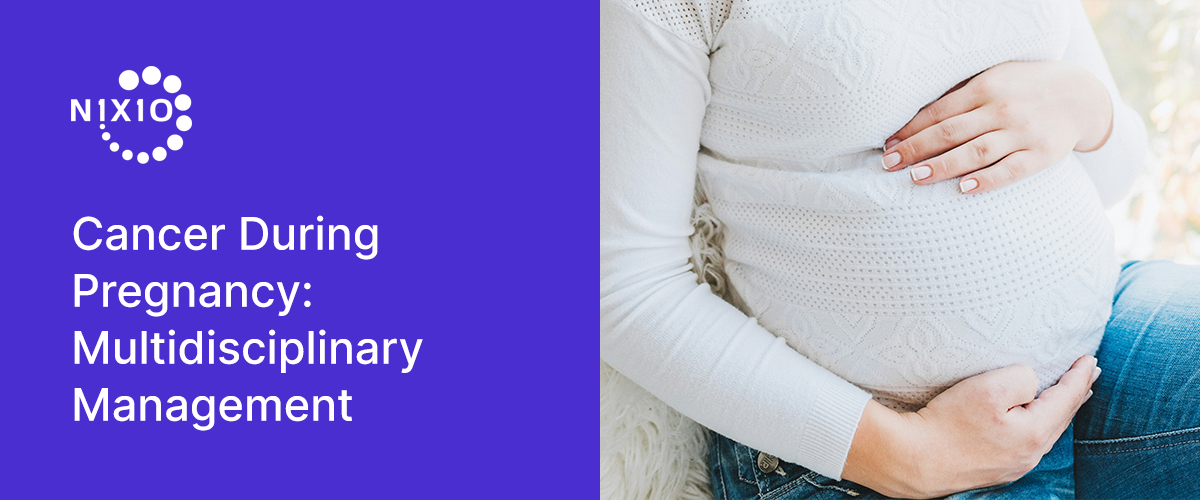The most common malignancies diagnosed during pregnancy include breast cancer, thyroid cancer, gynecological cancers, melanoma and hematological malignancies.
The co-occurrence of pregnancy and cancer can arise in various settings, including a new diagnosis or recurrence of a prior cancer. Most commonly, the diagnosis is made when a pregnant person develops signs and symptoms of cancer that prompt evaluation and subsequent diagnosis. The pregnancy could be at any point during gestation; thus, the timing of treatment will depend on the risk of delaying treatment until delivery, as well as the risks to the fetus from exposure to each treatment.
Cancer care during pregnancy should approximate as closely as possible to the standard treatment for a nonpregnant patient with involvement of multidisciplinary supports, including both oncology and non-oncology medical specialists and ethical, legal, and psychosocial supports, as needed.
Risk of fetal harm with systematic therapy is greatest during the period of organogenesis; therefore, most chemotherapeutic agents can safely be administered after 12-14 weeks of gestation until 1-3 weeks before the anticipated delivery, although use of targeted therapy and immunotherapy during pregnancy is contraindicated because of limited data. Pelvic radiation therapy during pregnancy is absolutely contraindicated, while if radiation to the upper body is needed, administration should only be considered early in pregnancy. To ensure that the total cumulative fetal exposure to ionizing radiation does not exceed 100 mGy, early inclusion of the radiology team in the care plans is required. Surgery is ideally performed during the early second trimester, although surgery can be performed throughout the entirety of pregnancy when technically feasible with additional obstetric considerations. For combination therapies, whether a treatment can be used with similar effectiveness later or earlier in the usual sequence of treatment, to avoid fetal exposure, should also be explored.
Closer prenatal monitoring is encouraged with routine biweekly fetal assessment during oncologic treatment with the goal of vaginal delivery, unless obstetrically indicated or particular clinical scenarios, after 37 weeks of gestation when possible.
Postpartum breastfeeding should be discussed, and the neonate should undergo blood work to assess for acute toxicities with follow-up arranged for long-term monitoring.
For example, a diagnosis of acute leukemia during the third trimester warrants aggressive multi-drug therapy urgently, whereas a localized breast cancer might be safely treated with surgery only or might be treated after delivery, depending on the characteristics of the tumor and gestation time. Some patients may become pregnant while on adjuvant therapy, therefore exposing the fetus to treatment early in gestation, with risks of teratogenicity and disruption of fetal or placental growth. The patient’s need for ongoing therapy in these cases also must be considered. Finally, occult maternal cancers may be detected in cell-free DNA as part of non-invasive prenatal testing and may prompt further evaluation. In this setting, repeat testing and initial screening for occult malignancy may be prudent, with the potential for delaying treatment until after delivery.


